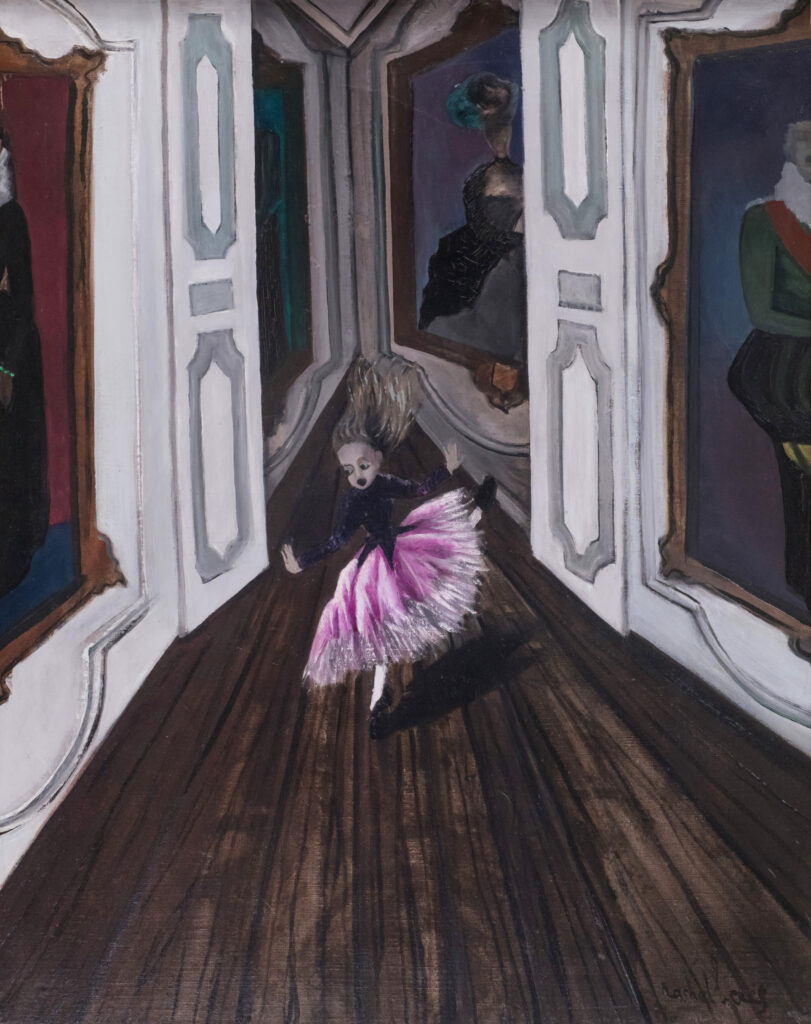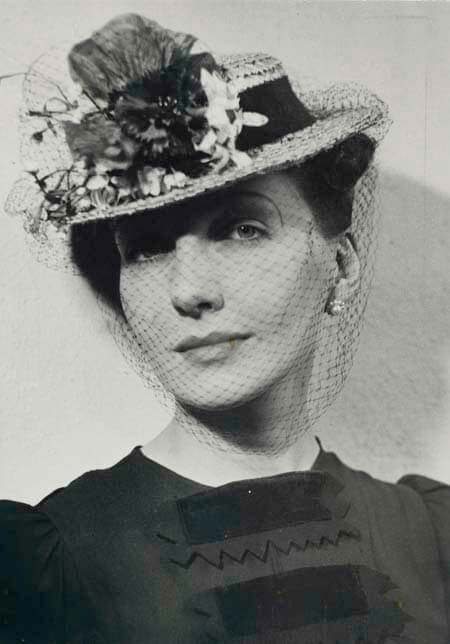Your currently viewing RAW Modern | Switch to RAW Contemporary
Rêve Très Ancien, 1947
The oeuvre of Baes focuses on the destiny of women and is predominantly inhabited by female figures. (Pursuing an interest in influential women, in the 1960s Baes even embarked on an important series of paintings on the theme of historical personages, and in particular Mary Antoinette, whose tragic destiny was a lifelong fascination). With its confined space and feeling of claustrophobia, this work – Reve Très Ancien – permeates a similar sense of tragedy as the artist’s The Philosophy Lesson (1963), and In the Polka (1946).
From 1946, Baes’ favourite subject became young girls. Strange, mysterious little things, dressed like dolls, they are depicted in airless rooms with an angst-ridden atmosphere and seem to subvert Breton’s cherished image of the child-woman, whose purity, and candidness he thought would facilitate access to the subconscious. While her work and universe are similar to that of Dorothea Tanning, Leanora Carrington, or Leonor Fini, there is one main difference: her girls do not possess the erotic qualities these artists invested in. Juggling with ambiguity, as if heralding the terrible events of the artist’s own life, these little girls appear prey to invisible demonic forces and are condemned to a tragic fate. Not possessing, as Cocteau put it: ‘the full crimes of innocence’, the destructive nature of Baes’s girls evokes childish fears which reflect the artist’s own torments. As she informed Lecomte: “All my paintings come from the subconscious, from a slowness in the elaboration.” By creating doppelgängers, the artist also toys with the notion of identity.

